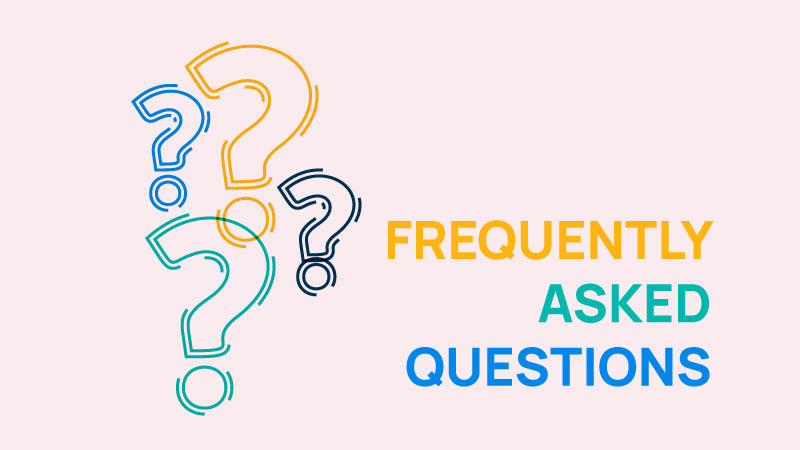FAQ content is more than just a way to answer user questions, it’s a strategic tool for earning Featured Snippets, People Also Ask (PAA) placements, and voice search visibility. Well-structured FAQ sections not only enhance user experience but also improve your website’s topical authority and click-through rates.
In this guide, you’ll learn how to create, optimize, and structure FAQ content that dominates search results and helps you secure top organic visibility.
What Is FAQ Content in SEO?
FAQ content refers to web sections or standalone pages where commonly asked questions about a topic, service, or product are answered clearly and concisely. From an SEO perspective, FAQs are powerful because they:
- Target long-tail and conversational keywords.
- Increase content relevance for semantic search.
- Help capture Featured Snippets and People Also Ask results.
- Boost dwell time and reduce bounce rates by keeping users engaged.
When structured with FAQ schema markup, this type of content signals to Google that your page directly answers user intent, a major factor in snippet eligibility.
Why FAQ Content Helps You Win Featured Snippets
Google’s Featured Snippets are short, direct answers displayed at the top of search results. They’re designed to give users immediate answers and FAQ-style content aligns perfectly with this goal.
Here’s why FAQs perform so well for snippet wins:
- They match natural query formats: Most people ask questions (“What is…?”, “How do I…?”, “Why does…?”) and Google rewards pages that mirror this phrasing.
- They’re concise and structured: Snippets are usually 40–60 words long. FAQs force you to give short, focused answers.
- They build semantic relevance: Grouping related questions improves your content’s topical depth, increasing Google’s confidence in your authority.
- They integrate perfectly with structured data: Adding FAQ schema markup helps Google display your answers directly in search results.
Step-by-Step: How to Create FAQ Content That Wins Featured Snippets
Step 1. Identify the Right Questions
Use SEO tools like AlsoAsked, AnswerThePublic, and Google’s People Also Ask (PAA) to discover the most common user questions in your niche. Combine this with your Google Search Console data to see which queries already bring impressions.
Focus on:
- Question-based keywords (who, what, when, where, how, why).
- Long-tail variations that match your user’s search intent.
- Related informational phrases from PAA and “Related Searches.”
Example:
If your main keyword is SEO strategy, related FAQ questions could include:
- “What is an SEO strategy?”
- “How do I build an SEO strategy for my website?”
- “What are the top SEO strategies for 2025?”
Step 2. Write Concise, Snippet-Ready Answers
The golden rule: Answer clearly within 40–60 words.
Each FAQ answer should:
- Begin directly with the answer (no fluff).
- Use simple, readable sentences (Grade 8 reading level or lower).
- Include your target keyword naturally once.
- Offer quick value, then link to an in-depth resource if relevant.
Example:
What is an SEO strategy?
An SEO strategy is a structured plan to optimize your website for higher visibility on search engines. It includes keyword research, on-page optimization, link building, and performance tracking to attract organic traffic and improve rankings.
Step 3. Organize FAQs by Topic Clusters
Don’t list random questions together. Instead, group them into semantic clusters around one theme or main keyword.
For example:
- Cluster 1: SEO Basics (What is SEO? Why is it important?)
- Cluster 2: SEO Strategies (How to build an SEO plan? What are the best SEO tactics?)
- Cluster 3: SEO Tools and Metrics (What is Google Search Console? How do you track SEO performance?)
This structure improves crawlability, topical authority, and user experience.
Step 4. Use FAQ Schema Markup
Once your FAQ content is ready, implement FAQPage schema markup to make it eligible for rich results.
Example JSON-LD format:
<script type="application/ld+json">
{
"@context": "https://schema.org",
"@type": "FAQPage",
"mainEntity": [{
"@type": "Question",
"name": "What is an SEO strategy?",
"acceptedAnswer": {
"@type": "Answer",
"text": "An SEO strategy is a structured plan to optimize your website for higher visibility on search engines. It includes keyword research, on-page optimization, link building, and performance tracking."
}
},
{
"@type": "Question",
"name": "Why is FAQ content important for SEO?",
"acceptedAnswer": {
"@type": "Answer",
"text": "FAQ content targets conversational queries, improves semantic relevance, and increases your chances of winning Featured Snippets and People Also Ask results."
}
}]
}
</script>
Adding schema markup helps Google identify your questions and answers, making them eligible for rich snippet displays in search results.
If your website runs on WordPress, adding FAQ schema is surprisingly simple, no coding required. There are several WordPress plugins designed specifically for implementing structured data markup like FAQ Schema. Here’s how you can do it:
Use an SEO Plugin with Built-in FAQ Schema Support
- Yoast SEO – When editing a page or post, simply add a “FAQ” block using the Gutenberg editor. Yoast automatically adds the necessary FAQ schema to your page’s code.
- Rank Math – Similar to Yoast, Rank Math includes a FAQ Schema block where you can enter questions and answers directly within the WordPress editor.
- All in One SEO (AIOSEO) – Offers an intuitive schema generator where you can choose “FAQ Page” as the schema type and fill out your content easily.
If your theme or SEO plugin doesn’t support structured data, try a plugin like:
- Structured Content (JSON-LD) – Adds FAQ, HowTo, and other schema types without conflicts.
- WP FAQ Schema Markup – Simple plugin focused solely on creating FAQ schema blocks.
Once you’ve added your FAQ section, always test it using Google’s Rich Results Test Tool or Schema.org Validator. This ensures your schema markup is error-free and eligible to appear as a featured snippet in search results.
Step 5. Optimize for Voice Search
With the rise of AI assistants like Google Assistant and Alexa, FAQ-style content is crucial for voice search SEO.
To optimize:
- Use natural, conversational phrasing.
- Focus on question-based keywords.
- Keep answers short and direct (under 30 seconds to read aloud).
This increases your chances of being the spoken answer when users ask questions via voice.
Step 6. Regularly Update and Expand FAQs
Google favors freshness and accuracy. Schedule quarterly reviews to:
- Add new FAQs based on trending queries.
- Update outdated stats or references.
- Remove duplicate or irrelevant questions.
Dynamic FAQs signal to Google that your page is actively maintained, boosting ranking potential.
Data-Backed Insights on FAQ SEO Performance
According to Ahrefs, over 96% of pages receive no organic traffic from Google, often due to lack of content depth and structure. Adding FAQ sections helps you target long-tail queries that drive incremental traffic even in competitive niches.
Additionally, Backlinko found that short, direct answers (40–60 words) are most likely to be selected as Featured Snippets.
Conclusion: Turn Questions into Visibility
Creating FAQ content is one of the smartest, most scalable strategies for improving visibility and winning Featured Snippets. By answering user questions clearly, organizing them logically, and using schema markup, you help Google and your audience, find exactly what they’re looking for.
Whether you’re optimizing a blog post, service page, or knowledge base article, FAQs are no longer optional, they’re an essential pillar of modern SEO strategy.
Frequently Asked Questions (FAQ)
An FAQ featured snippet is a highlighted box in Google search results that displays direct answers from web pages, usually pulled from clearly formatted FAQ sections.
FAQ content increases topical authority, improves on-page engagement, and boosts your chances of being featured in People Also Ask or snippet boxes.
Use concise, 40–60 word answers that directly address the question. Format each question as an H3 or H4 and use FAQ schema markup for maximum visibility.
Yes. Tools like Rank Math, Yoast, and Schema Pro make it easy to add FAQ schema visually without needing custom code.
Ideally 3–5 FAQs that add value and align with the search intent of your main topic. Quality and relevance matter more than quantity.





